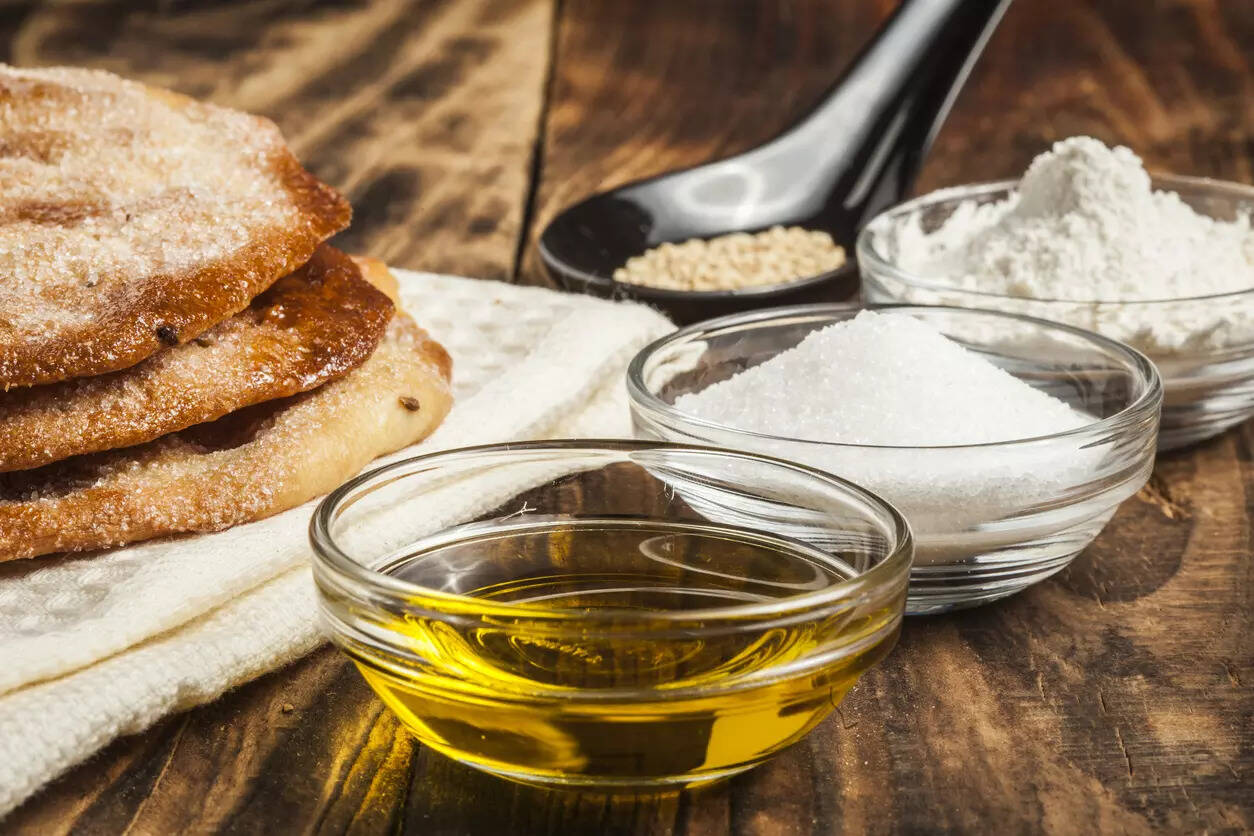
Hyderabad: Soon, dietary advice by Hyderabad-based ICMR-National Institute of Nutrition (NIN), based on the Union health ministry’s recent regulation on oil and sugar, will be displayed across central institutions in India.
These ‘model posters’ by NIN were prepared in collaboration with the Food Safety and Standards Authority of India (FSSAI).
Their recommendation: 25 grams of sugar (about five teaspoons) and 30 grams of edible oils, ghee, and butter (six teaspoons) every day. This calculation is based on a healthy calorie intake of 2,000 per day.
One soft drink a day can tip scales
“For a 2,000 calories diet, the sugar intake should make up for only about 5% — which is 100 grams. However, it’s not necessary to eat all 100 grams daily,” said a scientist from NIN associated with making the posters.
He added, “Many people go over this limit by drinking just one ultra-processed item, like a 500 ml soft drink. Earlier, the limit was 50 grams per day, but we have lowered it to 25 grams because lifestyle diseases are on the rise.
The boards, keeping with the Centre’s orders, will be displayed in all central govt bodies — schools, colleges and other public institutes. Additionally, CBSE and ICSE schools too have been asked to display the oil and sugar awareness boards since India has a large adolescent population vulnerable to health risks.
The key purpose of the recent order: To make people aware of their consumption. Experts say monitoring not just weight but body fat percentage has become essential in today’s time.
“In the case of oil, a family that now uses two to three teaspoons each day can cut it down by just 10% — to about a quarter of a teaspoon. It may seem small but can greatly reduce the total oil used by the family,” said the NIN scientist, recommending the use of different types of oils rather than just one kind. “That has more health benefits,” he said.
Backing the NIN recommendations, Hyderabad-based clinical dietician Dr Swetha A said that sugar and oil are often over-consumed without realisation, particularly with changing eating habits and easy access to foods high in fat, sugar, salt.
“Added (direct) sugar, which we put in our coffee, tea, is only required in minimal amounts, as it provides empty calories and no nutrition,” said Dr Swetha. “While often used for taste or as an instant energy boost we tend to consume it far beyond what is needed through honey, biscuits and other food items. In some households, sugar is added in vegetable curries too.”
Watch out for hidden fats in food
Similarly, people end up consuming both visible fats, which we put in the curries and invisible fats taken from nuts, seeds, dairy, and processed foods. “Often, invisible fats are overlooked, leading to excessive total fat intake. Oil and ghee are also added to chapatis, rice, and even dough,” the dietician said.
According to her, five tablespoons of sugar and six for oil is ideal. “Though actual requirements can vary based on an individual’s activity level and metabolism. The key lies in maintaining a balanced intake to avoid non-communicable diseases (NCDs). Even consumption of excess sugary items converts into fat,” said Dr Swetha.
ACTIVITY AND GENES CRITICAL TOO
Dr Avula Laxmaiah, a public health nutrition expert and retired ICMR-NIN scientist said that the rise in lifestyle diseases is not only due to unhealthy eating but also due to limited physical activity. “In the past, lifestyle diseases were thought to mostly affect rich people. But now we see a huge increase among low-income groups as well,” he said. “Another reason is that Asian Indian genes tend to store fat more easily,” he explained.
1 IN 3 HOMES IN HYD HIT BY NCD
The Union ministry’s initiative aims to curb the rapidly growing count of NCDs such as diabetes, obesity, high blood pressure, heart diseases, certain cancers, and other lifestyle-related illnesses. The awareness campaign, experts hope, will encourage people to reduce their intake of HFSS foods, and ultra-processed foods.
Citing a 2025 study of the medical journal The Lancet, the central health ministry’s directive states that obese adults in India are projected to rise from 18 crore in 2021 to 44.9 crore in 2050. This, alarmingly, will put India in the second spot globally. In Hyderabad, a survey by the city-based Helping Hand Foundation found that one in three households is affected by lifestyle diseases.